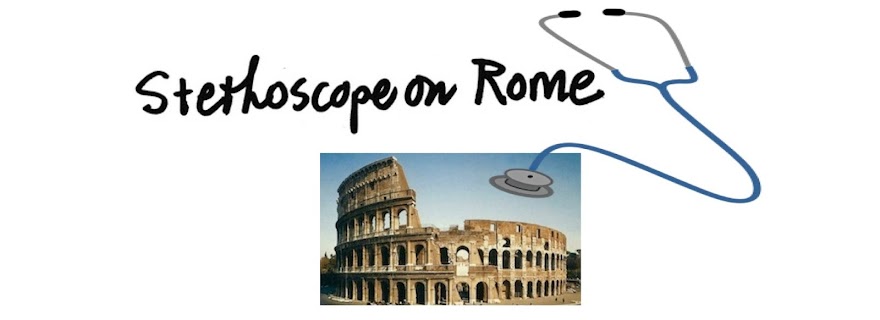Overweight or
obese 67% 40%
Obese 38% 10%
What’s
Their Secret?
When I moved to Rome I resigned
myself to getting fat. To my surprise, a year later I had lost 10 pounds.
My new shape blended in with my
surroundings. Italians are lately the second-thinnest people in Europe, next to
the French; a woman who’s medium-sized by American standard is hard put to find
clothes she can squeeze into in Rome boutiques.
How do they stay slender while tucking away all
that pasta, olive oil, and gelato? Chiefly, because their attitude toward food
is, well, normal. They eat three
squares rather than constantly stuffing their faces, they savor their food
instead of packing it in, they cherish the collective mealtime ritual of
sitting down together at length to break bread with family and friends. Grazing
and raiding the refrigerator are concepts as un-Italian as Taco Bell, and six
months living under the disapproving gaze of my mother-in-law until my ex- and
I found an apartment cured me of both.
That cultural norm of eating when
they’re hungry instead of using food as a pacifier means Italians are less
likely to get hooked. Food addiction, once you’ve acquired it, is a
particularly hard habit to shake. Here’s why: it’s common knowledge that
recovering junkies, smokers, or alcoholics have to stay away from their
favorite substance altogether. One sneak fix, one fag after one supper, one
highball will send the slipper-up back to addict hell. Since you can’t both stay
off food and stay alive, the obese are obliged to achieve that impossible goal of
eating – consuming the substance they’re addicted to – in moderation.
The kind of stuff that goes in Italian
mouths counts too, of course. They put real food on their plates rather than
fat- and sugar-packed processed products, quench their thirst with water rather
than soda, love vegetables, and after dinner are more likely to eat a peach in
summer or an orange in winter than a slice of chocolate cake.
I can’t find any reliable statistics
from mid-century, but between watching postwar movies and decades of personally
eyeballing the locals I can guarantee you that skinny hasn’t always been the
rule. When I first sat on Italian beaches in 1970 I was amazed at the plus size
bosoms and bottoms that were wrapped in those skimpy bikinis. Later when
fashions changed, Italians’ sensible food culture made slimming down a relative
cinch: just slash your standard portion of pasta by half, eat one less course
at every meal, and voilà in a decade the
national figure shrank from Rubens to . . . Raphael.
P.S. It helps, needless to say, that Italians habitually use their feet instead of their car, and take the stairs without considering it torture!
P.S. It helps, needless to say, that Italians habitually use their feet instead of their car, and take the stairs without considering it torture!




